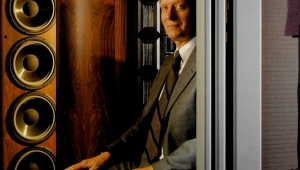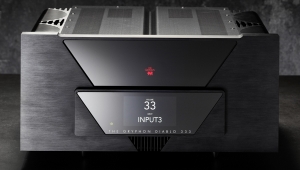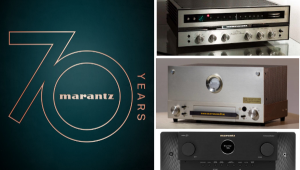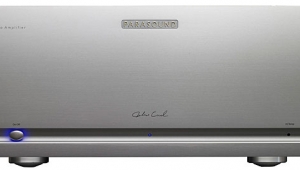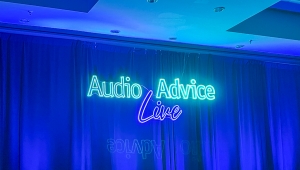| Columns Retired Columns & Blogs |
Class-T Amplifiers Announced
It's well known among designers of power amplifiers that the class-A and -A/B amplifiers (referred to as linear amplifiers) used in the majority of car, home, PC, and pro audio systems are notoriously inefficient. They can consume vast amounts of power and yet waste most of it---as much as 80% or more---as heat. They require large power supplies and massive heatsinks, which drive up system weight, size, and cost. On the other hand, class-D amplifiers, using Pulse Width Modulation switching technologies, have good power efficiency but sometimes questionable audio fidelity. (The Spectron designs are possibly the exceptions here.) Class-D amps are used mostly in battery-powered applications in which sound quality might be considered secondary to battery life.
Wouldn't it be nice if the sound quality of a linear amplifier could be combined with the efficiency of class-D? Hard to do, especially in the audio-quality department, but a Silicon Valley startup, Tripath, claims to have finally reached the beach. Although skeptics in the industry abound, Tripath says that its new Digital Power Processing (DPP) circuit topology will usher in a new era of inexpensive, lightweight, "class-T" digital amplifiers.
"Recent years have seen numerous technological advances in the recording, transmission, reception, and reprocessing of digital audio streams," claims John Rizzo, VP of marketing at Tripath. "But little effort has been focused on the audio amplifier electronics---that critical last stage that can make or break a sound system---until now. When it comes to audio components, listeners have realized that just being louder is not good enough anymore. That is the philosophy on which Tripath is based. Class-T allows listeners to achieve the same 'warm' sound they've come to expect from traditional linear amps, but in a package four times as efficient, and significantly lower in price and size."
According to the company, the Tripath class-T amplifier employs proprietary adaptive processing based on voice/data communication theory, which they say virtually eliminates various switching artifacts normally encountered in traditional PWM digital amplifiers. Class-T uses a high sampling rate---much higher than PWM---which provides higher signal resolution than class-D, with lower distortion. A class-T amplifier's processors "track the characteristics of the input transistors and, based on the analog input signal, switch the output transistors with exactly the right timing to eliminate class-D PWM problems such as ground bounce, output transistor mismatches, dead-time distortion, and residual energy from the oscillator in the audio band."
Tripath's white paper on the class-T approach states that "if one were to compare the waveform before the output filter of a class-D PWM amplifier to a class-T amplifier, some significant differences would be evident. The waveform for a class-D PWM amplifier would be a pulse-width varying digital signal at the fixed frequency of the triangle wave generator. The waveform for a class-T amplifier would be a complex digital waveform of varying frequency. A class-T amplifier switches the output transistors in a fashion similar to spread spectrum technology, at a varying rate up to 1.5MHz."
What all of this achieves is a very low intermodulation distortion figure of less than 0.1% that is flat across the power output range at all audio frequencies (20Hz to 20kHz), and High-Frequency Intermodulation Distortion (IHF-IM) that is also less than 0.1%. Class-T also claims a noise floor of -100dB and a dynamic range greater than 120dB. The design also sports greater than 80% power efficiency, which leads to smaller power-supply needs and lower cost.
But does it sound good? Tripath plans to have their design working in the Alpine car-audio booth at the CES in Las Vegas next January. Also planned are several consumer-electronics products, including powered speakers for both computer use and home audio applications. Tripath has created a family of class-T amplifier approaches---including chips, boards, and system prototypes---that they are currently supplying for evaluation and use by manufacturers of home and PC audio electronics. It will be products from these manufacturers, marketed under Tripath's Combinant Digital brand, that they hope will provide the proof.
But perhaps even more lucrative for the company, and in addition to the near-term audio market, Tripath's DPP has a number of important future applications as radio-frequency (RF) amps, which provide the amplification cell phones need to transmit signals. The linear RF amps used by current cell phones are very inefficient, consuming a large percentage of the phone's battery power. By using energy-saving DPP-based components instead, cell-phone manufacturers should be able to extend battery life many times over, offering much longer talk times.
- Log in or register to post comments
